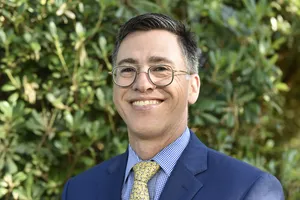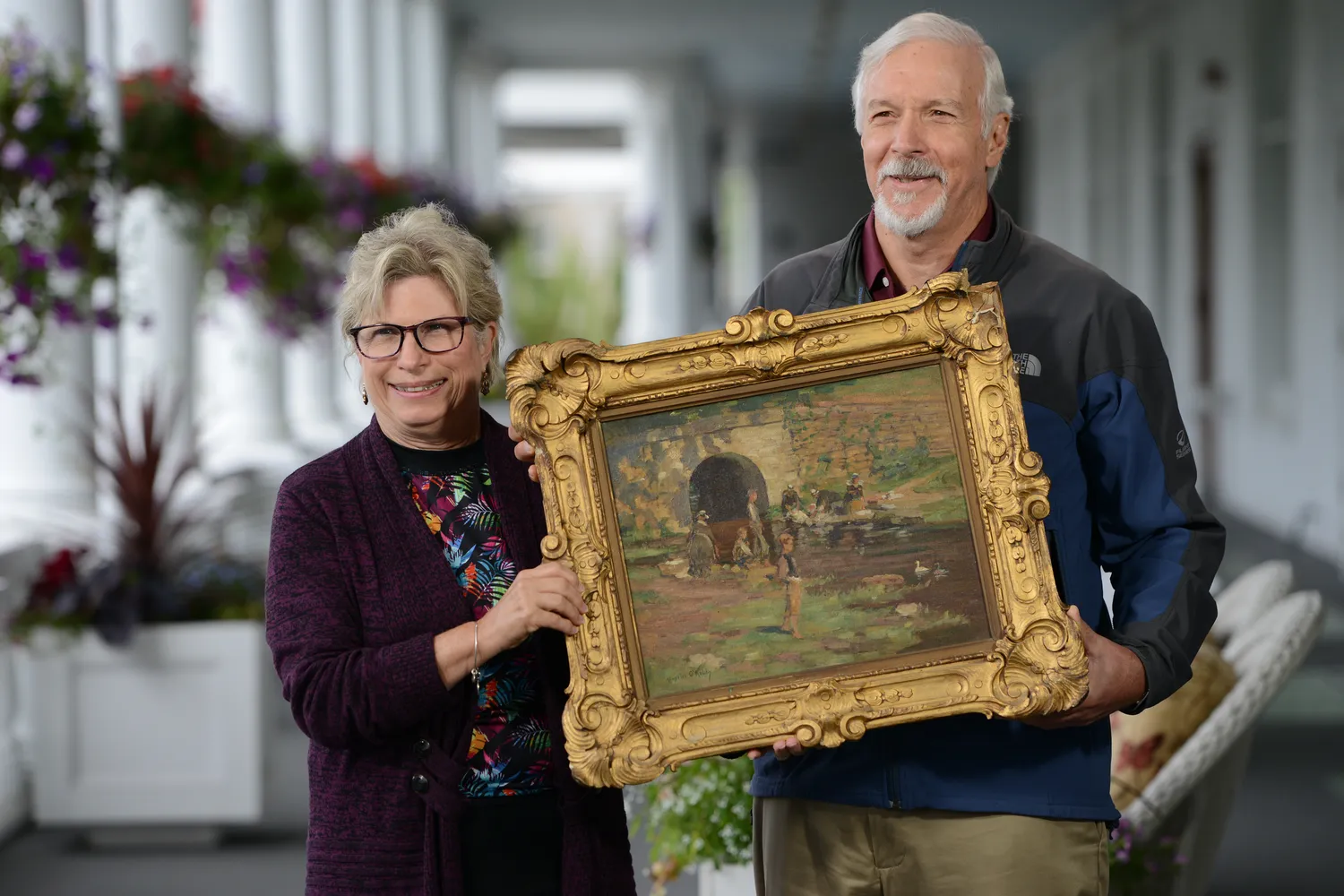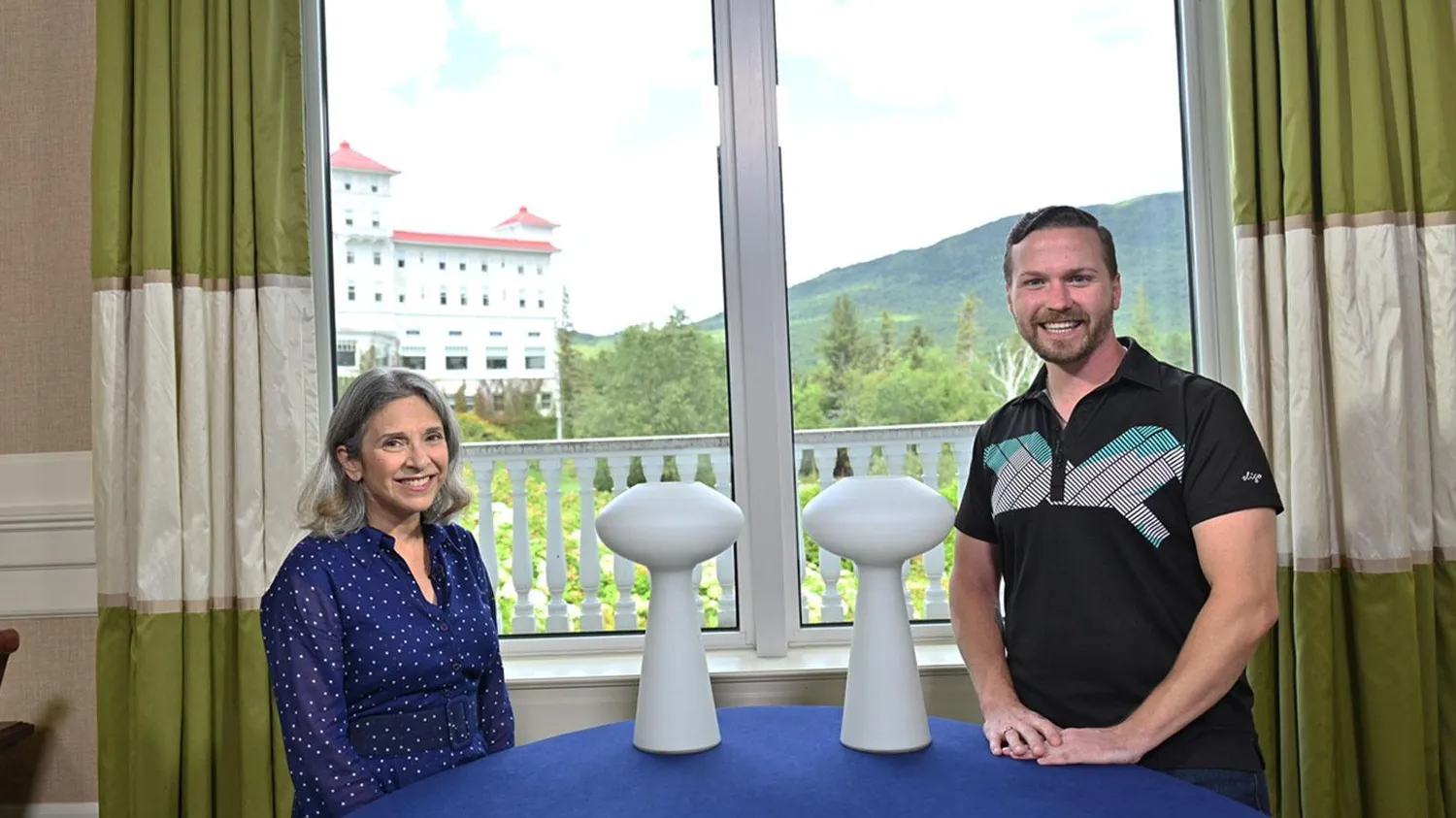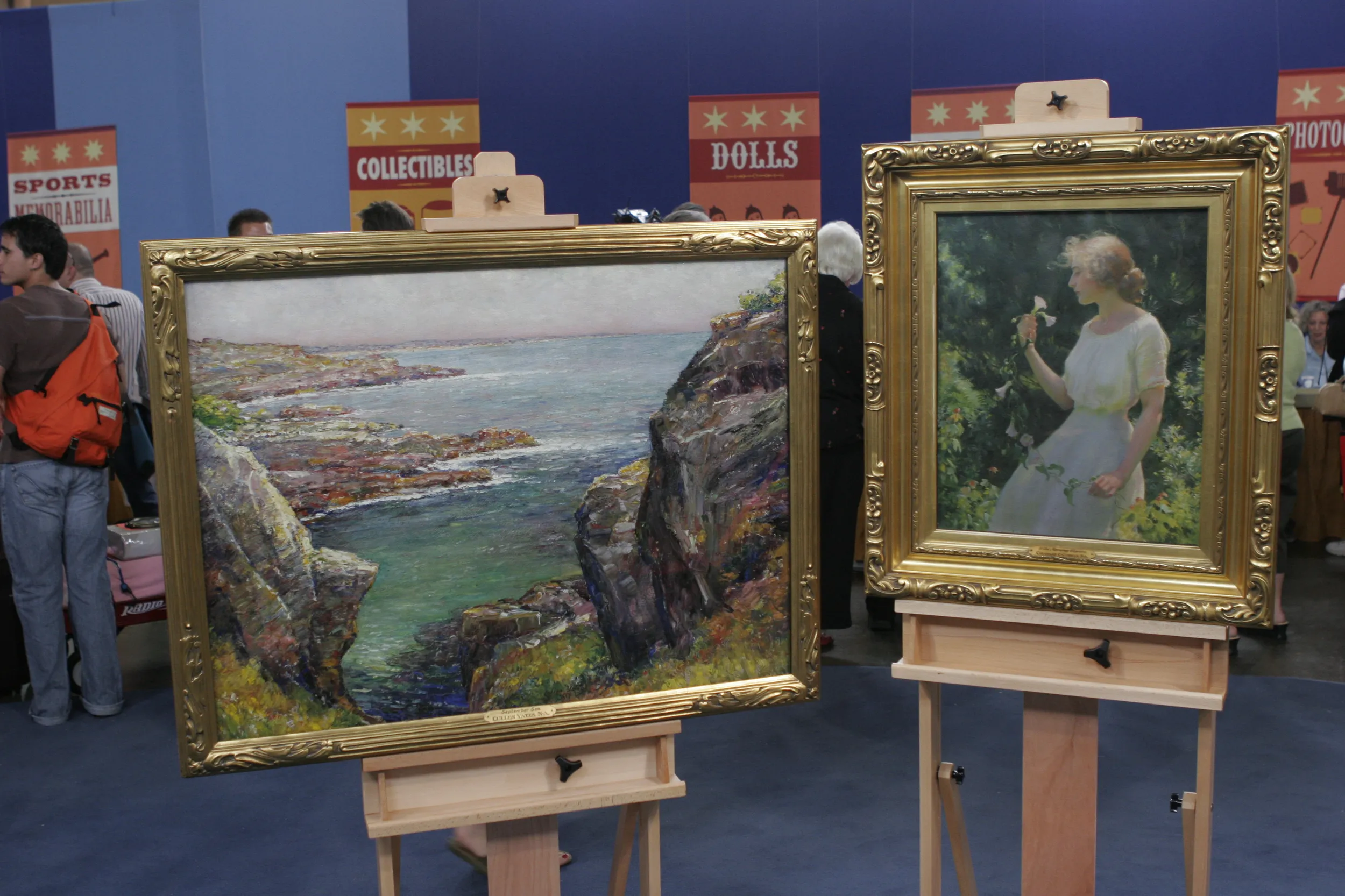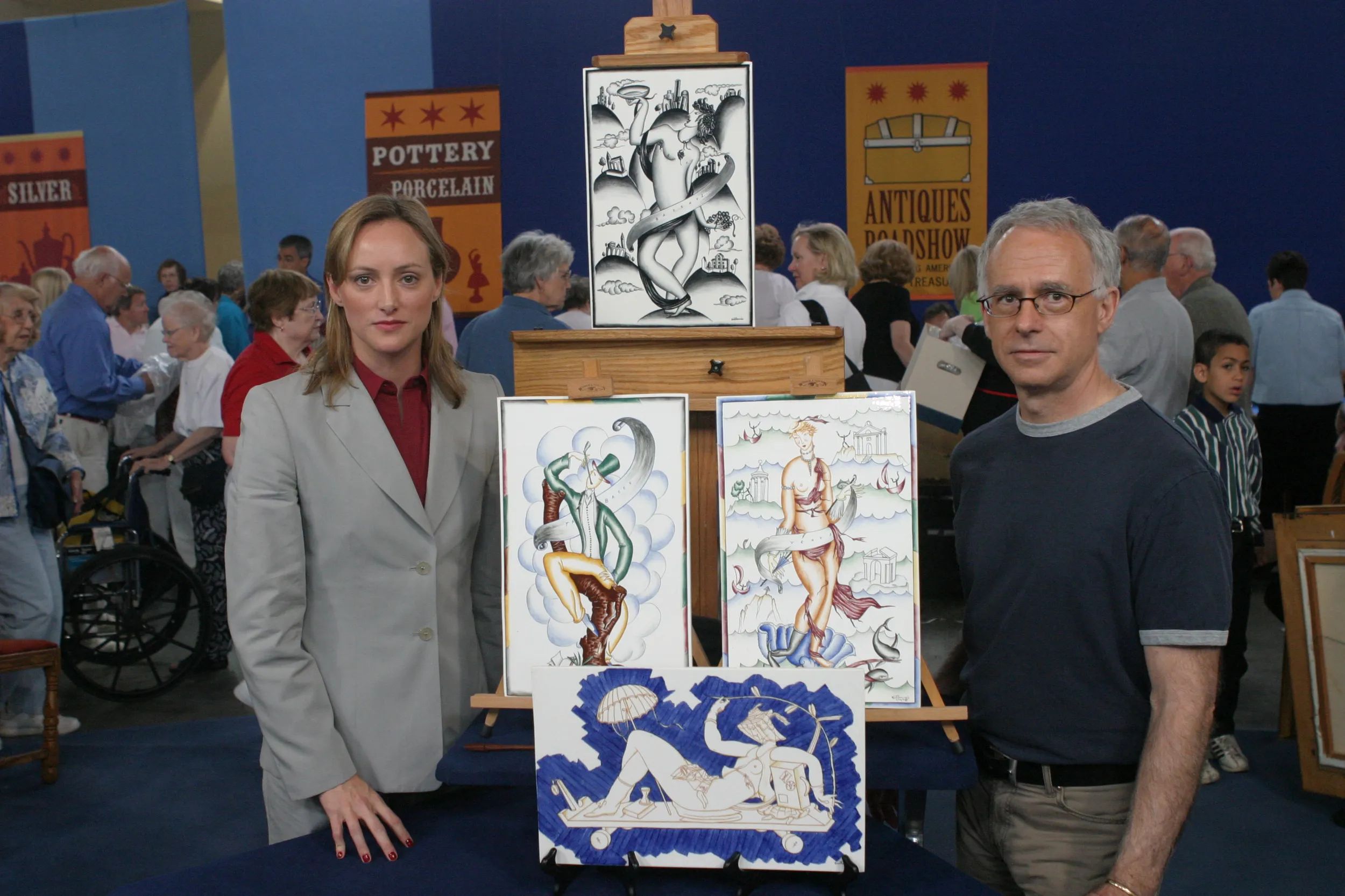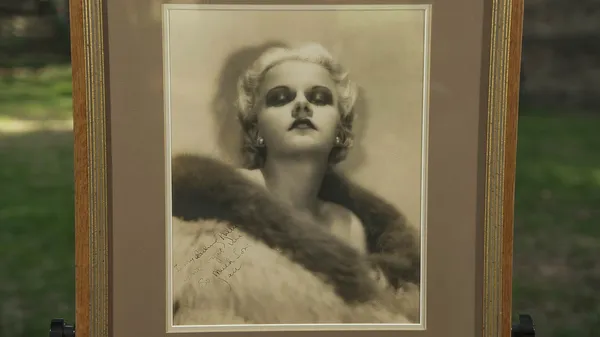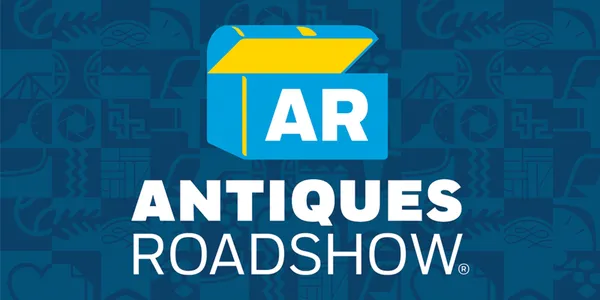GUEST: This was given to my great-grandfather, I believe, in 1910, by the artist. My great-grandfather was an editor for Forest and Stream magazine, which became Field and Stream magazine. And I believe that the artist was also an illustrator, and that's about the only connection I can, uh, get between the two. It sat in our basement on top of a player piano for most of the time when I was a kid. My mother didn't particularly care for it, so it stayed downstairs and wound up with a little hole in it at one point. When my parents moved out of my great-grandfather's house, I think my mother found out that the artist had a name, and she wound up taking it to the Metropolitan Museum of Art in New York to have it restored. They had it until probably the mid-1980s, and then she gave it to me.
APPRAISER: I did a little looking into your great-grandfather. He was one of the co-founders of the New York Anglers' Club.
GUEST: Yes.
APPRAISER: And that was in 1905. This painting is signed lower left, W. Herbert Dunton. He's really known as Buck Dunton. And it's dated 1909, and then there's the inscription to your great-grandfather. Buck Dunton is famous for two reasons. The first one was his illustration work, which he started very young. He sold his first drawing when he was 16. And he was in the mold of one of those people who wanted to, to live it. He just didn't illustrate it. So starting in, uh, 1896, every summer, he would go west. He had adventures. He, uh, spent a while with a grizzly bear hunter, and then wrote a story about it. Uh, he was in Colorado, he was in Montana, he was in New Mexico. He was also in Mexico. He said if he had been alive during the time of Lewis and Clark or Audubon, that, his exact words were that, "I wouldn't waste my time painting."
GUEST AND APPRAISER: (both laughing)
APPRAISER: He wanted to experience the West, and he felt like it was already gone. And he had a great run as an illustrator, and he worked for everybody. Uh, as we know, Field and Stream, as you said. But Harper's, Scribner's, Century. Uh, he did book covers-- Zane Grey, in particular.
GUEST: Oh.
APPRAISER: This is from the first part of his career, but then he is very famous for the second part of his career, where he ended up in Taos, and he's one of the Taos Society of Artists. This painting is, uh, oil on canvas, and I did a little looking, and I wasn't able to find where this was illustrated, but this was certainly done as an illustration. This is from the golden age of illustration, though, and it's masterful. That red right in the middle of the painting is not an accident. And you'll notice that there's a, like, a triangular notch of light in the top of the painting.
GUEST: Yep.
APPRAISER: And then that draws your eyes down to the light between the two figures, right at the center of the composition, which makes you, the viewer, you're right into the narrative, right? He sucks you right into the center. And then that little handkerchief on the back that he has tied around, the figure with his back to us, also in the triangular shape, echoing the light above, and reflecting the red in the figure in the center. It's all meticulously planned out. It's just supposed to look like it isn't. So have you had it appraised before?
GUEST: No, it's, it really is the first time it's ever been out of our house.
APPRAISER: And you don't know anything about that hole in that painting? Which is-- the repair, you can see it, it's up here.
GUEST: Well, other than, uh, three young boys fooling around in a room with, uh, throwing things at each other, uh... I don't know which one of us, uh, did that, but, uh, um, my mother did get it fixed, so... (laughing)
APPRAISER: At auction, a reasonable estimate would be $50,000 to $70,000.
GUEST: Oh!
APPRAISER: Now, the reason it's not more, a little bit, is the hole in the painting. (laughing) Really, the big issue is that there's no animals in the painting. Even if these guys were hunting out on horseback and the horses were in the painting, that would, that would get us into six figures, for sure.
GUEST: Oh, wow. Okay, well, we'll have to get some horses drawn on that or something.
APPRAISER: (laughing)
